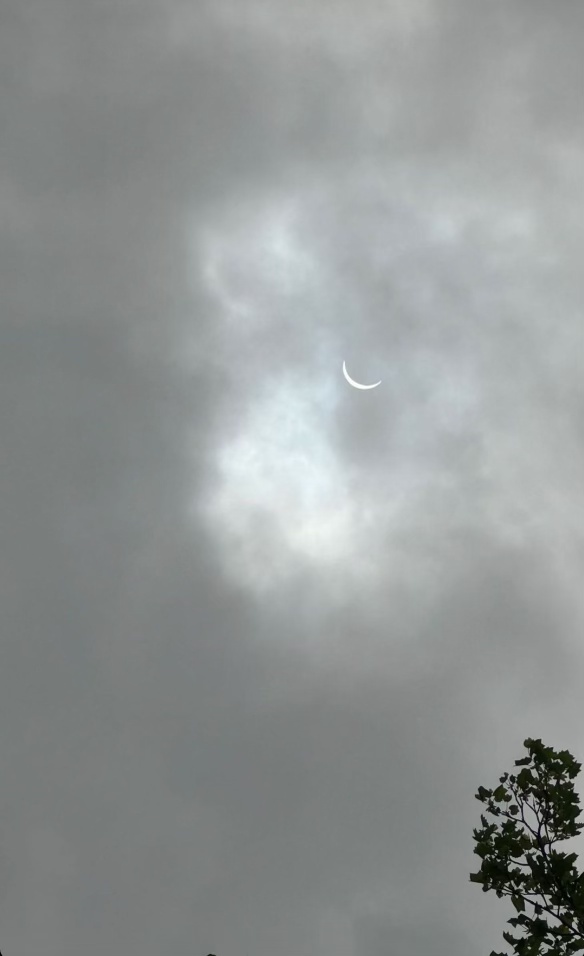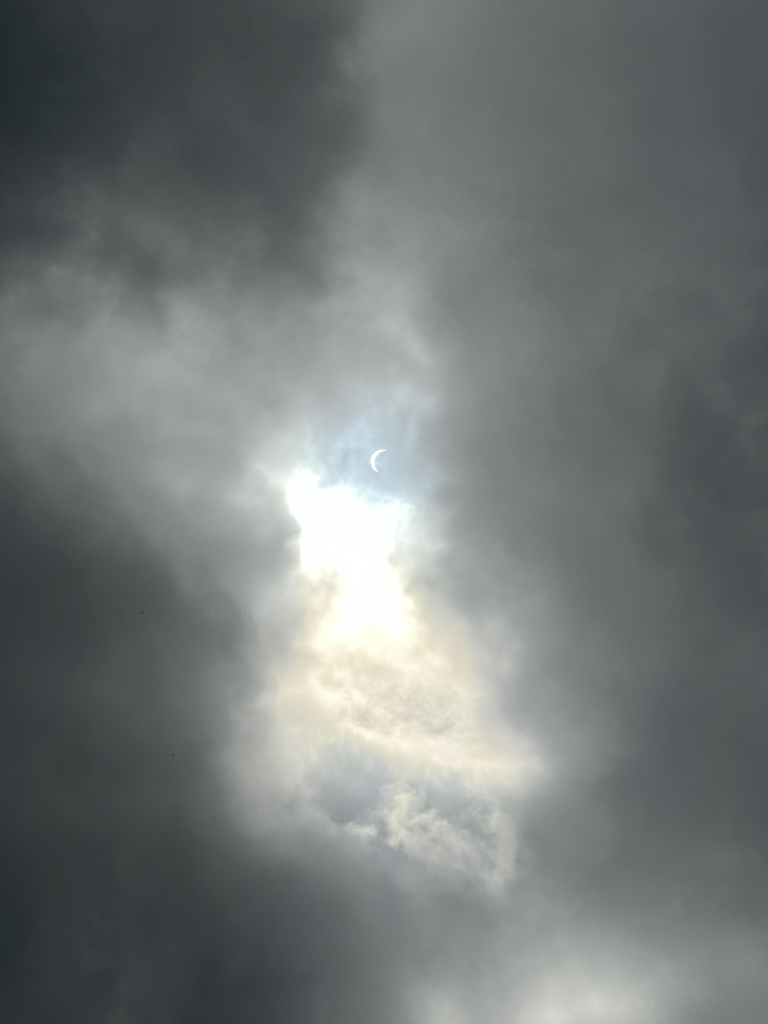
This is my picture of the solar eclipse from today. The fact that eclipses even happen is one of the craziest coincidences, as the difference in relative size of the Moon and the Sun is the same percentage-wise, meaning that when the Moon is exactly in front of the Sun, it completely blocks it. There has been significant religious, social, and political change as a result of eclipses and their prediction. This is for two reasons. First, the Sun was significant for agrarian civilizations because of its role in crop development, so it being blocked out seemed to be a negative sign that something was wrong. Second, because total eclipses that are visible very rarely happen multiple times within a single lifetime, meaning that without a concrete written record, civilizations were thrown off and unprepared for eclipses.
The eclipse in Nashville started around 12:45pm, and reached its maximum at 2:03pm. To be honest, it was super underwhelming, as it did not get as dark as I thought it would. I am pretty spoiled, though, as I was in Nashville for the total eclipse in 2017, which got significantly darker and was more visible at partial eclipse, as it was a clear day.
All of today prior to the eclipse, I had been thinking about what it would have been like to have no idea that the eclipse was coming, especially if I did not have any understanding of what eclipses were. While today’s eclipse was underwhelming, I definitely would have been surprised by how dark it got suddenly in the middle of the day, but I would have just assumed that it was about to storm hard given the cloud coverage. Did you see the eclipse? Leave a comment if you did, and if you got any better pictures than the one that I took.











